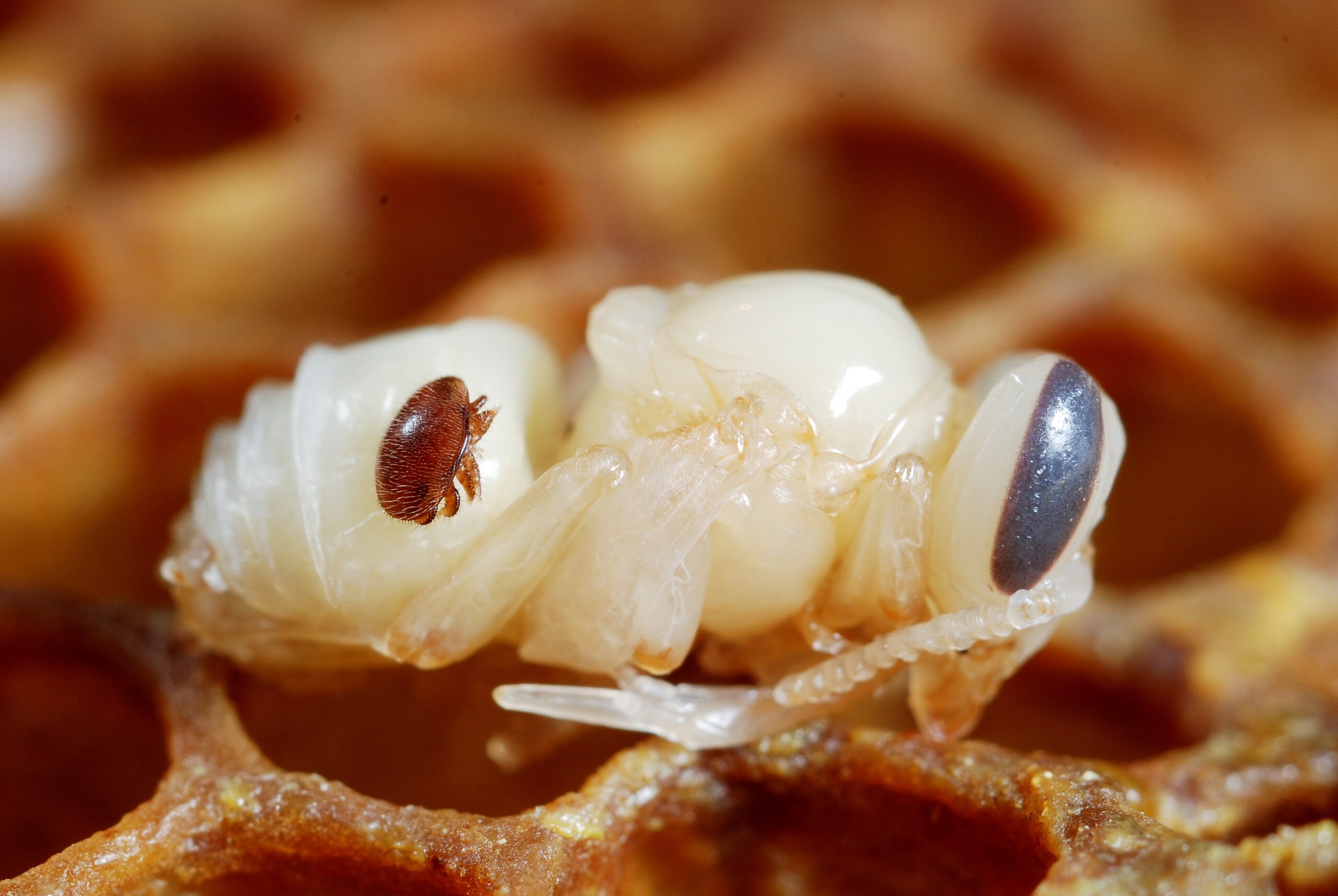Q. I treat my hives regularly and follow the manufacturers’ instructions to the letter. Is it really necessary to test for [varroa] mites?
A. While checking for American foulbrood (AFB) is a legal obligation, checking for varroa is not. Some say that it is an absolutely essential beekeeping tool, while others don’t think it is necessary or think they don’t have the time. According to the 2022 New Zealand Colony Loss Survey, almost 80% of NZ beekeepers claim to test for varroa in one way or another. This compares quite favourably with figures from COLOSS for testing in Europe, where only 63% of beekeepers report testing for varroa.
There are many ways of checking for mites; the least effective way is to look for them on bees. A recent study showed that for every mite seen on a bee’s back, 31 mites were hidden away. The three most effective field tests are the sugar shake test, alcohol (or methylated spirits or detergent) wash and CO2 injection. These tests can be up to 95% accurate if done correctly with repeated shakes.
Surprisingly, less than a third of New Zealand beekeepers check for varroa with the four most effective methods (sugar, alcohol, CO2 and sample sent to laboratory). Other less reliable or less effective methods include examining drone brood, ether roll, natural mite drop onto a sticky board, and 24-hour mite drop after treatment onto a sticky board. Everyone has their own testing regime; all methods have advantages and disadvantages, it’s up to you to choose.
No treatment is 100% effective all of the time; even if it were, re-infestation could occur. Some people are reporting resistance to certain treatments, which will only exacerbate the problem. A collapsing nearby hive or local resistance to your miticide could cause a ’mite bomb’ in your hive unless you test.
If you wait until you see varroa on a bee or signs of deformed wing virus, then it could be too late. You may kill the mites, but the Parasitic Mite Syndrome (PMS) will likely kill your bees. A more judicious use of miticides could save a larger beekeeping operation thousands of dollars by treating at the right time and potentially reducing excess chemicals in the hive.
Best practice for the responsible beekeeper is to test occasionally for mites (to see if you need to treat), test a week after strips go in (to see if they’re working) and then again after strips come out (to see if treatment worked); otherwise it’s just guesswork.
Overall, it seems that accurate testing isn’t as widespread as I had thought, but it will reduce colony losses from varroa and save money. Checking for varroa will also help you breed varroa sensitive bees, rather than more resistant mites.
Ken Brown is an Apiculture Land Based Training tutor, Vice President of the Auckland Beekeepers Club and a keen hobbyist beekeeper.

Varroa destructor on bee pupae. Photo: Gilles San Martin, Flickr
